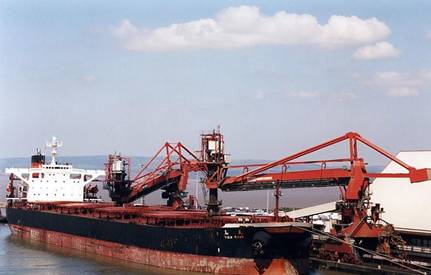Syllabus: With reference to specific examples, evaluate each of the following as a means of achieving economic growth and economic development.
(b) Export promotion
 The majority of trade generated by the less developed economies goes to the developed world.
The majority of trade generated by the less developed economies goes to the developed world.
Less developed countries seldom trade with other less
developed countries (they are probably trying to sell the same things).
Exporting to the more sophisticated markets of the developed world,
forces them to satisfy higher quality and health and safety standards
to ensure their goods are internationally competitive.
Trade encourages information and technology transfers from more developed to less developed economies, resulting in higher productivity in less developed countries.
Being involved in export trade also promotes the ending of domestic protectionist policies.
Domestic industry are forced to become competitive and not hide behind protectionist barriers. Resources will flow to those industries that have a comparative advantage. These tend to be labour intensive and low technology industries. In the early stage of diversification, government can offer incentives to business to switch away from commodity exports and into manufactured goods (cf Dilma´s incentives for foreign companies to locate factories in the North of Brazil).
Export-led demand can be an important source of growth for developing countries in the early stages of their development, particularly given their reliance on primary exports (see earlier in this section). However, countries may also try to export manufactured goods as a growth strategy. This is often termed an outward-oriented strategy.
Much of the growth and development associated with the Asian Tiger economies was fuelled by export promotion, which had a number of benefits:
- Comparative advantage - resources are used more efficiently by replacing imports with domestic goods.
- Increased investment - outward-oriented policies may help encourage inward investment and therefore improve domestic productivity.
-
Economies of scale - the increased sale of exports may help
raise the domestic level of production and enable the country to gain
from economies of scale and lower their costs of production.(Check-out
Infant Industries argument)
- Increased employment - increased production should help boost the domestic level of employment.
- Greater equality of income distribution - increased demand for labour will help boost wages in a developing economy and this should help to make income distribution more even.
- Increased competition - an outward-oriented strategy will expose the country to the full weight of international competition. Domestic producers may struggle initially to compete, but productivity will rise much faster than if import substitution policies are followed.
However, the governments of less developed countries may regard these outward-oriented policies as too risky for their own industries and prefer to erect protectionist barriers, especially if opening up markets to foreign competition is deeply unpopular with the population. Countries adopting outward-oriented policies have often face civil unrest as a result.
Note the command word EVALUATE included in the syllabus statement so a Data Response Qd could be about this
For example:
Nov 2011
Q5d:
Using information from the text/data and your knowledge of economics,
evaluate China’s export-oriented growth and development
strategy.
[8 Marks]